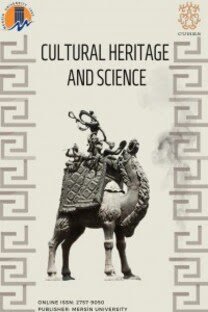Legal Deposit of Cultural Heritage: Development and Overview (History, Principles and Elements)
Archives or legal deposit organizations which are libraries, museums and archive organizations are memory organizations that offer services such as deposit, organizing, sorting, making ready for use and preserving physical documents that have archival quality in accordance with predetermined rules. Legal Deposit is the name of compulsory the donation that, according to the royal charter (decree) or law, the printers, editors or authors are obliged to give one or more copies of each printed work to the State. The number of libraries benefiting from this business is many around the world. Compilation work in history begins with the decree of French King François I. The king issued a royal charter (decree) in Monpellier on 28 December 1537 in order to show the future generations that the fine arts and positive sciences were developed in his own age. In this edict, he ordered that no book could be put up for sale unless a copy was given to his private library in Blois castle. Other countries followed France’s deposit edict. An electronic transformation known as the digital revolution continues to occur in all areas of life. This transformation has affected the archives as well as in every organization providing public service. In Turkey, some of the cultural institutions have taken the cultural objects in their archives to the digital archive and made them available on the web. These are digitization of manuscripts, virtual museum implementation, audio-visual archive studies of TRT and contributions of some non-governmental organizations to the cultural inventory, etc. These studies are studies carried out by cultural institutions that are independent from each other, in line with their own initiatives, without a legal basis. The project of digital archiving of national cultural heritage materials and their access via a common web continues to expand. The name of the project is Turkey Cultural Inventory Project (It is accessible at www.envanter.gov.tr). In the introductory part of this article, how libraries, archives and museums that deposit archival materials started and their strategic developments throughout history will be briefly explained. With the communication age we are in, strategies for transition from physical storage to digital inventory will be explained with examples. After the legal deposit in the world will be explained briefly, the legal deposit works in Turkey will be summarized. In the last section, type the main topic of digital cultural inventory of Turkey, Turkey's Culture Inventory database operation will be explained.
Keywords:
Legal Deposit, Inventory, Digital Preservation, Digital Archiving Cultural Heritage, Digital Cultural Heritage,
___
- Gilchrist j (2005) ‘Copyright Deposit, Legal Deposit or Library Deposit?: The Government’s Role As Preserver of Copyright Material’ 5 Queensland U. Tech. L. & Just. J. 177. Communication on the Digitisation and Online Accessibility of Cultural Material and Digital Preservation Brussels 24.8.2006 C (2006) 3808 Final.
- Lo P, But K & Trio R (2013). Different missions, common goals–museum-library collaboration at the Hong Kong Maritime Museum in the service of local and family history and the conservation of documentary heritage in the South China Sea, ss. 2-3). Submitted to the IFLA WLIC on July 28, Singapur.
- Buckland M K (1988). Library Materials: Paper, Microform, Database. College and Research Libraries 49: 117-122.
- Sağlamtunç T (1998) 50. Kuruluş Yılında Milli Kütüphane ve Derleme Sorumluluğu, Ankara.
- Acaroğlu M T (1966) Dünyada ve Bizde Derleme İşleri. TKDB, 15(4):250
- Crews K D (1988). Legal deposit in four countries: Laws and library services. 80 Law Library Journal 551, p. 553.
- Musnik S Y (2011). Fransa Milli Kütüphanesi ve Türkçe Bölümü. Türk Kütüphaneciliği, 25 (2), 271-276.
- Kent A, Lancour H & Daily J E (1975). Encyclopedia of Library And Information Science, vol. 14. New York: Marcel Decker: 140-141.
- The Legal Deposit of Electronic Publications (1996). Prep. by Working Group of the Conference of Directors of National Libraries (CDNL). Beijing:UNESCO, p.18.
- Anameriç H (2008). Türkiye’de devlet Yayınlarının Bibliyografik Denetimi ve Devlet Yayınları Bibliyografyası. Ankara Üniversitesi Dil ve Tarih-Coğrafya Fakültesi Dergisi 48 (1),p. 115.
- Karpuz B (2008). Bavyera Devlet Kütüphanesi. Bilgi Dünyası, 9 (2), pp. 554.
- Anameriç H (2006). Osmanlılarda kütüphane kültürü ve bilimsel yaşama etkisi. Osmanlı Tarih Araştırma ve Uygulama Merkezi Dergisi (19), p.2. Acaroğlu M T, Basma Yazı ve Resimleri Derleme Kanunumuzun ve Milli Bibliyografyamızın Islahı Meseleleri, İstanbul,2003.
- Yayın Aralığı: Yılda 2 Sayı
- Başlangıç: 2020
- Yayıncı: Mersin Üniversitesi
